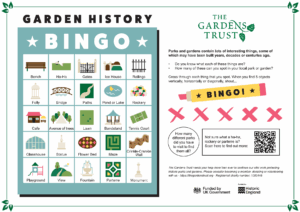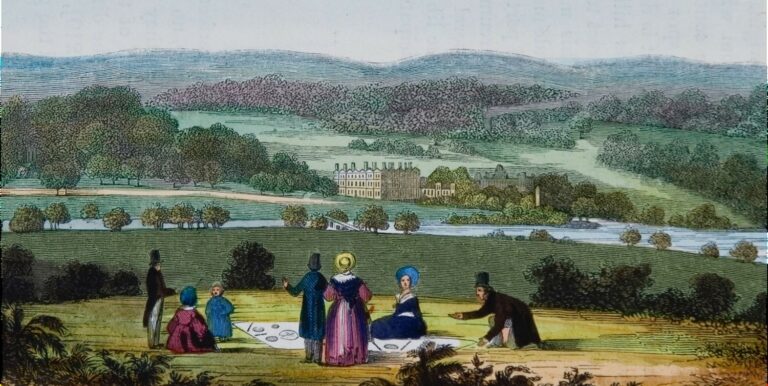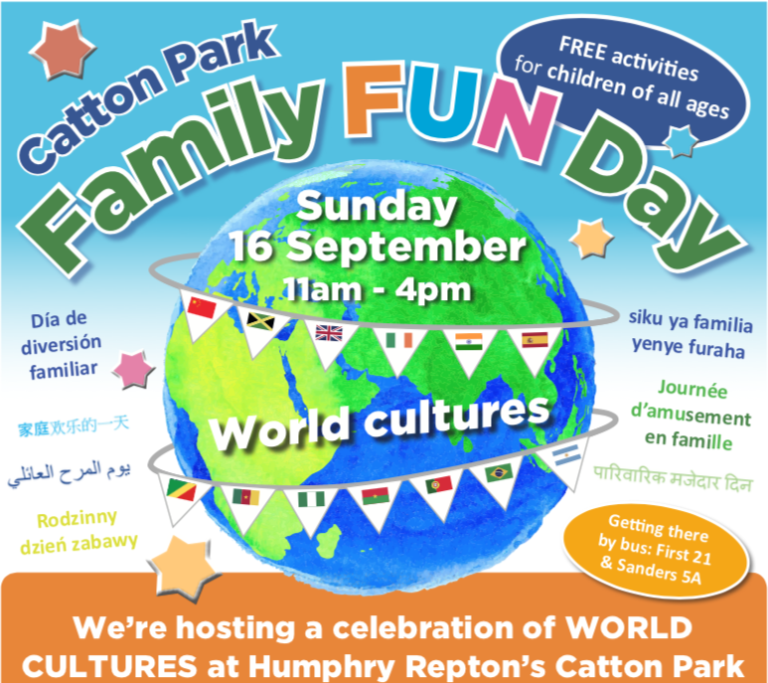Water Features
- Pond – A small area of still water, often for wildlife or decoration.
- Lake – A large body of water, bigger than a pond, found in some parks or estates. Sometimes used for boating which became popular in Victorian times through to the 20th century.
- Fountain – A structure where water is made to flow or spray decoratively. Famous examples of historic fountains include those at the Studley Royal Water Garden in Yorkshire, built in the 18th century.
Planting Areas
- Lawn – An area of short, regularly cut grass. Before the invention of the lawnmower in 1870, lawns were kept short by using grazing animals such as sheep or cattle or by using scythes.
- Flower Bed – A defined area of soil where flowers are planted. Flower beds can take all shapes and these different styles evolved through time. Some examples of these are parterres, or the bright beds created in Victorian times that you often see in public parks.
- Rockery – An area arranged with rocks and plants that grow well among stones. These first became popular in Victorian times as interest grew in alpine and exotic plants that needed different growing conditions. The oldest rockery in Europe was built in 1774 at Chelsea Physic Garden.
- Parterre – A formal garden layout with symmetrical patterns of plants, often bordered by low hedges. Well known examples can be found at Audley End in Essex, or Osborne House on the Isle of Wight.
Structures & Buildings
- Bench – A seat, usually made of wood or metal, where people can sit and rest.
- Gates – Large doors or barriers that mark the entrance to a garden or park. Some gates were designed to celebrate events like Jubilees.
- Railings – Metal or wooden barriers that line paths, steps, or edges for safety or decoration. Some railings were removed and recycled for use during the war and there was some backlash against them in the 20th century as a means to ‘keep the populace out’ of green spaces.
- Bridge – A structure that lets people cross over water or a low area. ‘Sham’ or ‘mock’ bridges (not suitable for walking on!) were used by landscape designers to create a sense of perspective and distance in historic gardens.
- Glasshouse – A building made of glass (like a greenhouse) where plants are grown under shelter. One of the oldest surviving greenhouses can be found at Ham House in Surrey and the largest glasshouse in the world is at Kew Gardens.
- Bandstand – A covered, open-sided platform where bands or musicians perform outdoors. The oldest known bandstand in the UK was built at the RHS’s gardens in South Kensington.
- Tennis Court – A marked area with a net for playing tennis. Tennis became popular in Victorian times with initial courts appearing in Royal Parks and private grounds before spreading to public parks later in the 19th and early 20th centuries.
- Playground – An area with equipment for children to play on. Early playgrounds evolved from 19th century ‘gymnasia’ with large pieces of equipment such as trapeze rings and horizontal bars to allow adults and youths to climb and swing, for exercise rather than play.
Historic Buildings or Decorative Features
- Ha-Ha – A hidden ditch or sunken wall that keeps animals out without blocking the view. One of the earliest ha-ha’s can be found at Stowe in Buckinghamshire.
- Ice House – An underground or insulated building used in the past to store ice and keep food cool. Popular from the late 17th to early 20th century, Ice was transported from as far away as Norway.
- Folly – A building or structure built mainly for decoration, often with a playful or unusual design. ‘Made to be seen’ their function was to provide a focal point on walks around a landscape.
- Statue – A carved or cast figure of a person, animal, or object, used for decoration or commemoration.
- Crinkle-Crankle Wall – A wavy brick wall that is strong and decorative, built as a way of reducing the use of bricks in response to the 1784 brick tax, later repealed in 1850.
- Monument – A large, lasting structure built to remember a person, event, or idea. Many examples can be seen in parks across London, such as the 18 monuments built in Hyde Park.






